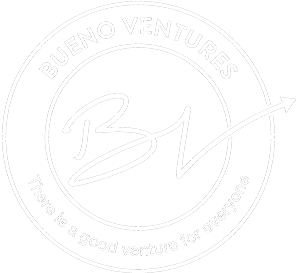Manuel “Manny” Rodriguez, DBA, BCBA
Bueno Ventures
Leadership teams aim to maximize time, energy, and value for both their people and the organization as a whole. How do they do that? In a few words, leadership team alignment.
Organizational leaders provide direction. They set the vision and mission. They often participate in management meetings to review progress and make decisions. Leaders also take on coaching and mentoring roles for others to develop professionally. Finally, leaders provide meaningful feedback on performance to encourage the right things and discourage the wrong things.
Individually, a leader can make a positive impact. But collectively, a group of organizational leaders can magnify that positive impact by a factor of 10 to 100. The challenge most leadership teams face is team alignment.
What Is Leadership Team Alignment Anyway?
LEADERSHIP – Leadership is a nebulous term in and of itself, and yet we know it when we see it. In the book Leadership in Behavior Analysis, Parks, Tudor, and Ventura (2019) describe how leadership is among the most widely studied subjects in organizational fields and has become common coursework in academic training. The authors go further and argue that “leader” is just another label to describe an individual who engages in behaviors that generate specific effects on the environment. And well, that’s true! But while there have been many advances in theories of effective leadership, it’s still not an exact science, and there’s no real consensus on what -isms or behaviors constitute an effective leader. In fact, some leadership models still focus on personal attributes or “styles” of leadership. To define leadership behaviorally, I offer this definition: “Leadership is behaving in a certain way in order to influence the behavior of others” (Rodriguez, 2015). In other words, a presumed leader largely impacts and influences behavior changes in other individuals, presumably striving to be a positive influence.
TEAM – I recently wrote an article on my personal LinkedIn account describing my perspective on teams and how “bringing together people from various learning histories can be somewhat of a challenge.” In essence, that is what forms a team—bringing together people from various learning histories to work collaboratively. From a behavioral perspective, I offered my thoughts on how to make teams effective, and I even used the acronym T.E.A.M. Below, I will briefly reiterate what I wrote in the original article:
Together. By reinforcing the behaviors of working collaboratively, the team takes the form of an active unit, working “together” versus individually.
Expectations. Without clear expectations of who does what, when they do what, and how they do what, and moreover to what end, the team can break down quickly.
Accountability. A successful team holds each other accountable to working together to meet those expectations.
Motivation. To ensure success, and encourage the right behavior, motivation is key. Motivation, however, requires a clear understanding of what each individual member of the team finds motivating.
ALIGNMENT – The final word in the paradigm, alignment in the context of leadership teams, is not about agreements versus disagreements. You don’t have to be in full agreement to be in alignment with others. Alignment is about moving in the same direction, with no deviation from the path, and working collaboratively toward an end goal. Alignment is about communicating a consistent message, focusing on specific priorities, and working with others to support the team in achieving. Alignment, just like in an automobile, is to maintain a straight course.
How Do We Achieve Leadership Team Alignment?
When you hear the words “leadership team alignment” or a similar variation, what comes to mind may be one or more of the following from your learning history—a very long meeting, an offsite retreat, consultants, strategy planning and identifying who is going to do what, or maybe even rebranding the company’s vision and mission statement. All these alignment activities are valuable, and they share something in common—some fundamental behaviors that result in true “alignment” across a leadership team. To provide some scientific substance to this topic, I offer five steps to achieving leadership team alignment.
Step 1: Define the problem statement and why it matters.
In a leadership team, a need for alignment is triggered by a problem, one that is typically not very well defined. Scientists start with defining the problem they aim to solve. As Brent Gleeson (2016) states eloquently, “Without establishing the ‘why’ it is difficult to build and protect a great organizational culture.” Defining the problem statement and why it matters is the very foundation for getting people on the same page before looking to solve the problem.
Step 2: Expose misalignments.
In order to gain alignment, it is important to call attention to where there may no alignment, or misalignments. Anthony and Kümmerli (2019) state that, “rather than letting disagreement simmer beneath the surface, make it crystal clear where your team agrees, and where it doesn’t. We have found that real-time polling tools can bring great clarity to these discussions.” In addition to identifying the misalignment, discussing why it exists is also important, as the same authors emphasized. Exposing misalignments helps solidify the need for alignment and gets everyone grounded on the reality of the problem at hand.
Step 3: Identify the end game.
Gleeson (2016) refers to the end game as “what winning looks like.” By identifying the end game of an alignment, leaders will have a list of metrics of success—how to gauge their efforts and the efforts of others after implementing the solution. Leaders with a clear end game will have the needed measuring stick to determine whether what they are doing is working. In the science of organizational behavior management (OBM), the data for both behaviors and results are essential for evaluating success along the way, particularly when the behaviors are new to the people performing the task and when the outcomes are critical to the organization (Rodriguez, Sundberg, & Biagi, 2016).
Step 4: Calibrate to maintain alignment.
With vehicle alignment, a great deal of calibration is involved. When it comes to leadership team alignment, calibration is also crucial. What does calibration look like? For starters, the leadership team comprises more than one person. Asking questions to ensure an understanding of the problem statement and why the organization seeks to solve the problem is a means of calibrating between team members. Additionally, calibration should include individuals outside the leadership team, namely the key stakeholders—shareholders, managers, employees, customers, and so on. By gathering their feedback, the leadership team can test for alignment beyond the team itself and then calibrate the thinking behind the problem statement and the solutions. This takes a more scientific approach—fact finding, testing, evaluating, and ensuring validity. Don’t guess. Calibrate.
Step 5: Constantly evaluate alignment.
If leadership team alignment was achieved through one day off site, a multi-day meeting, or even a series of meetings across multiple months, alignment doesn’t end at the meeting.
Scientists would ensure ongoing evaluation, data collection, and modifications to the solutions based on data. Gleeson (2016) recommends holding regular check-ins to stay aligned through meetings and communications. In other words, leaders should engage in ongoing communications with their fellow leaders to ensure alignment is intact.
If you or your fellow leadership team members are looking to host an offsite meeting or a series of meetings to get everyone on the same page, these five steps can help you achieve the most success rather than leaving things to chance.
References:
Anthony, S. D., & Kümmerli, B. C. (2019, January 2). A simple way to get your leadership team aligned on strategy. Harvard Business Review. Retrieved from https://hbr.org/2019/01/a-simple-way- to-get-your-leadership-team-aligned-on-strategy
Gleeson, B. (2016). 6 steps for improving leadership alignment. Retrieved from https://www.forbes.com/sites/brentgleeson/2016/08/29/6-steps-for-improving-leadership- alignment/#df04f2c63262
Parks, N., Tudor, A., & Ventura, A. (2019). Leadership in behavior analysis: The independent variable that advances our field (1st ed.). Miami, FL: 305 Publishing.
Rodriguez, M. (2019, September 22). The quarterly meeting: It is about the TEAM! [LinkedIn post]. Retrieved from https://www.linkedin.com/pulse/quarterly-meeting-team-manuel-manny- rodriguez/
Rodriguez, M., Sundberg, D., & Biagi, S. (2015). OBM applied! A practical guide to implementing organizational behavior management. Melbourne, FL: ABA Technologies.
Manuel “Manny” Rodriguez, DBA, BCBA
CEO and Co-Founder, Bueno Ventures
Manny is CEO of Bueno Ventures Management Services, a venture capital and management services firm working with small to mid-size businesses to grow and scale using OBM techniques. His accomplishments across his career include launching OBM consultancies, strategy execution for Fortune 500 companies, and national and international speaking engagements. He has authored articles on the subject of OBM, published in peer-reviewed journals, co-authored the four-volume book, “OBM Applied! A Practical Guide to Implementing Organizational Behavior Management” and “Quick Wins! Accelerating School Transformation through Science, Engagement, and Leadership.” Manny is a Board-Certified Behavior Analysts, and has had the great honor of serving as President and Executive Director of the OBM Network, a 400+ professional member organization. In addition, Manny has helped launched successful startups, and recently began leading the OBM Alliance, an organization dedicated to the growth of OBM practitioners. Manny received a Doctorate of Business Administration from the University of South Florida’s MUMA College of Business, a master’s degree in applied behavior analysis at the Florida Institute of Technology, and a dual bachelor’s degree in criminology and psychology from Florida State University in Tallahassee, Florida.

